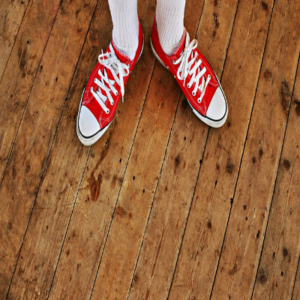Finishing and Maintaining Wood Floors
Part 5 –Finish Application

Introduction
Proper selection and application of the appropriate finish for a wood floor is essential for maximum performance. Failure to properly apply the finish can give unsatisfactory results and even require a complete refinishing job. Regardless of the type of finish applied, certain precautions should be exercised to improve the ease of application and the quality of the final finish.
Precautions
- Dust and dirt are an important factor in causing a rough surface. When applying the first coat of finish, be certain that the wood is absolutely clean and free of dust, dirt, and any foreign materials. Dust and dirt should also be removed from the cracks or other floor irregularities. The walls, windows, ceilings, and doors should also be clean to keep dust from dropping onto a wet finish and mar its appearance. A painter’s tack rag or dampened (turpentine or mineral spirits) rag will help pick up much of this dirt. A careful cleaning between coats is also necessary.
- Most finishes will not adhere to wax, oil, and other materials which may contaminate the surface. Be certain that the finish is applied only to bare, clean wood.
- The temperature of the floor, room and finishing solution should be approximately 70 degrees F or somewhat warmer to assure that the finish flows on evenly and cures properly.
- Most finishes cure faster in dry weather. Therefore, low humidity conditions are also ideal.
- A rough finish can also result if dust or small pieces of dried finish are transferred from an old applicator or from a partially used can of finish.
- Make sure there is adequate ventilation to handle fumes.
- Application of finishing materials should begin promptly after sanding so that there will be no time for changing moisture conditions to raise the wood grain.
Penetrating Sealers
Penetrating sealers are best mopped on using a clean string mop or long-handled applicator with a lamb’s wood pad. Apply generous amounts of the sealer, making sure that final stroking is in the direction of the wood grain. Any excess sealer on the wood surface should be wiped up with a clean cloth or squeegee. A wide brush can also be used for application.
After the first coat has dried it should be buffed with No. 2 steel wool. Buffing can be done by hand or with an electric polisher equipped with a steel wool pad. A second coat of penetrating seal will result in a longer service life but is not always necessary, especially with close grained woods. Penetrating sealers can usually be refinished in heavy traffic areas without showing patch marks.
Polyurethanes
Polyurethanes may be applied using a brush or lamb’s wool applicator. Because polyurethanes are a surface finish, care should be taken to work along the grain. Polyurethanes should be flowed on in a continuous manner so that the leading edge does not have time to dry out. After the first coat is thoroughly dry, buff it with steel wool, dust well and then apply the final coat.
Varnishes
Varnishes are usually applied with a brush and flowed on evenly and smoothly. The first coat can be thinned lightly so that it will penetrate in the wood like a sealer. After the first coat has dried, smooth it with fine sandpaper, dust well and then apply the top coat full strength.
Meet the Author
Dr. Todd Shupe is the President of Wood Science Consulting, LLC. He is a well-recognized expert on wood forensics, wood preservation, wood decay and degradation, and wood species identification. He has a broad background in new product development, quality management, and marketing and sales in both the public and private sectors. For more information please visit DrToddShupe.com.
We welcome your comments below.
Thank you for visiting. We trust that you have enjoyed reading our articles.
Liked this post? Read more below or search for more topics . . .

